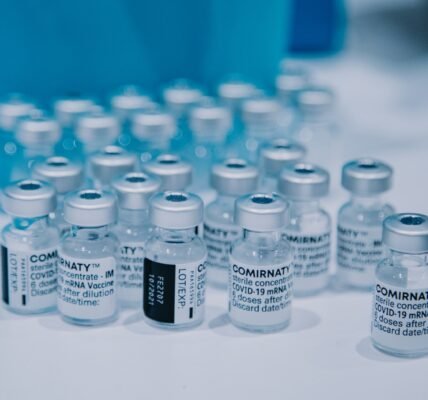New “SAVE” Plan Offers Student Loan Relief: Enrollment Begins for Biden’s IDR Program
The U.S. Department of Education has introduced the beta version of President Joe Biden’s groundbreaking income-driven repayment (IDR) plan, known as the Saving on a Valuable Education (SAVE) plan. With this latest development, borrowers can now start enrolling in the program, aiming to provide much-needed relief to those burdened by student loans.
The SAVE Plan: A Glimpse of Hope
President Biden’s SAVE plan is designed to alleviate the financial strain faced by borrowers, offering the potential to lower monthly payments to zero dollars for eligible applicants. Additionally, the program is projected to reduce monthly costs by half and save borrowers who make payments of at least $1,000 a year. The White House, in a recent statement, expressed its confidence in the SAVE plan’s ability to positively impact borrowers’ lives.
A Response to the Supreme Court’s Decision
The introduction of the SAVE plan comes in the aftermath of the Supreme Court’s ruling to strike down Biden’s previous student loan forgiveness plan. The initial plan aimed to cancel federal loans of up to $10,000 per borrower for individuals earning less than $125,000 per year (or couples earning less than $250,000), with an additional $20,000 forgiveness for those who used Pell Grants during college. This ambitious proposal sought to eliminate around $441 billion in outstanding student debt.
Expanding Benefits and Impact
Unlike the now-defunct forgiveness plan, the SAVE program is expected to impact a broader spectrum of Americans, providing relief to borrowers currently enrolled in existing IDR plans and those using standard repayment options. However, the projected cost of loan write-offs under the SAVE plan amounts to a staggering $475 billion over the next decade, according to the University of Pennsylvania’s Penn Wharton budget model.
Beta Testing and Application Process
The Education Department is actively seeking applicants for the SAVE plan’s beta testing phase, encouraging individuals to submit their IDR applications now to refine the enrollment process ahead of the official launch. During this testing period, the application may be available intermittently, so prospective participants are advised to keep trying if they encounter any temporary unavailability. Confirmation emails will be sent to all applicants upon successful submission.
Automatic Transition for REPAYE Plan Applicants
Applicants who have already applied for the previously announced REPAYE Plan will be automatically transferred to the SAVE Plan, simplifying the transition process for borrowers.
Exclusion of Private Student Loans
Unfortunately, private student loan holders won’t benefit from the SAVE program or other government initiatives. However, they can explore alternative options to reduce their monthly payments, such as refinancing loans at lower interest rates.
Time-Sensitive Applications
The SAVE Plan offers hope to many borrowers as federal student loan payments are set to resume in October. However, the Education Department assures that applications submitted this summer will be processed in time for the first payment due date, providing much-needed relief.
Tailored Repayment Calculations
The Department of Education highlights that the SAVE Plan customizes monthly payment amounts based on a borrower’s income and family size. For individuals earning $32,800 or less annually (approximately $15 an hour), monthly payments drop to $0 immediately. The program also promises annual savings of at least $1,000 for borrowers earning above this threshold compared to other IDR plans.
Progressive Benefits Over Time
As the SAVE Plan progresses, it aims to reduce undergraduate loan payments by half by the next summer, shifting from 10% to 5% of income above 225% of the poverty line. Borrowers with both undergraduate and graduate loans will pay a weighted average between 5% and 10% of their income, calculated based on their loans’ original principal balances. Additionally, borrowers with an original loan balance of $12,000 or less will receive forgiveness for any remaining balance after ten years of payments, with an additional year of repayment before forgiveness for every extra $1,000 borrowed.
Responding to Borrower Concerns
A recent survey by Life and My Finances reveals that half of student loan borrowers believe they won’t earn enough to make payments when federal loan payments resume in October. The survey indicates that the average student loan debt among respondents is $26,733, with monthly payments averaging $443. However, the median student loan payment is $250, and the mean annual salary is $59,172.
Avoiding Default
Although 50% of respondents express concerns about affordability, only 6% are likely to default on their loans. Many borrowers are determined to find ways to meet their obligations. Experts warn against defaulting on federal loans, as the government has substantial power to garnish income, even seizing government paychecks, tax refunds, and disability or Social Security payments after a 270-day grace period.
Conclusion
As enrollment for the SAVE Plan begins, many borrowers are hopeful that President Biden’s income-driven repayment initiative will bring much-needed relief to the burden of student loans. With its unique features and potential savings, the SAVE plan holds promise for millions of Americans striving for financial stability amid the challenges of student debt.
Download our app MadbuMax on the Apple App Store for the latest news and financial tools. Interested in getting your finances in order do not forget to check Dr. Paul Etienne’s best-seller book on personal finance. To access more resources, tools, and services please click here. Also, do not forget to follow Dr. Etienne on IG or Twitter.





